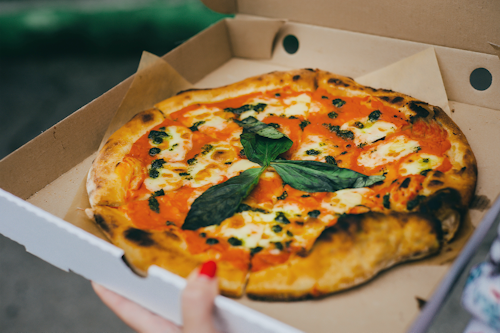4 Challenges in Food Delivery Apps (And How to Overcome Them)
September 19, 2019
We’ve come a long way since the first online delivery order was placed at Pizza Hut in 1994. These days, customers are likely to have multiple food delivery apps on their device, alternating between each to get the best local deals. At Remerge we’ve worked with more than 22 food delivery apps, translating to about 5 million global deliveries per year - so we’ve learned a thing or two about this vertical. In this post, we’ll share our insights on the main challenges faced by food delivery apps and how you can overcome them.
1. The challenge: culturalization
Food is cultural, so our messaging around it needs to adapt to the locations in which it’s being marketed. For example, in countries that observe Ramadan, it’s essential that apps are sensitive to the times at which the majority of users will be fasting.
The strategy
Adapt your bidding times!
- Adjust your bidding so that you’re never targeting people while they’re trying to fast. You can then switch bidding back on to coincide with feasting times.
Adapt creatives to the time of day
- Ensure that your messaging remains highly relevant by referencing the foods specific to that time of day and the precise moment in that religious festival/holiday.
2. The challenge: the weekend effect
With Food Delivery, the pattern of behavior is always the same - the volume of events climbs steadily from Thursday, reaching a peak on Sunday. This is followed by a massive drop in order in the early days of the week.
The strategy
Adjust bidding to push at the weekend.
- Although retargeting campaigns should run on an always-on basis, it’s possible to adjust bidding to maximise reach during the weekend when purchase intent is at its highest. This is where food differs vastly from the e-commerce vertical, in which user behaviour - and therefore bidding - remains relatively stable day to day.
Decrease bidding at night
- Optimise your budget by decreasing bidding during the night when users are sleeping/aren’t using their phones.
3. The challenge: seasonality
Seasonality is always going to affect how we eat, with cravings changing with the seasons. Seasonality can even go as granular as the time of day - depending on the hour, users will be searching for different meal types and supply will either be plentiful (such as at midday) or scarce (such as in the early hours of the morning when restaurants are closed). As a result, Food Delivery apps have to constantly stay on top of their messaging to ensure relevancy.
The strategy
Adapt your creatives to the time of day
- Knowing the eating habits of your audience and showing them the most relevant offer for the time of the time will help you to boost performance and deliver ads that your users can relate to.
4. The challenge: localization
Food Delivery is distinct from e-commerce in that restaurants have a limited delivery radius, so not all offers are available to all users. This poses a challenge when creating relevant creatives, as you don’t want to advertise a restaurant that the user won’t be able to access.
The strategy
Use Dynamic Product Ads
- DPAs allow you to serve users ads with the specific restaurants in their area that they can order from. By adding restaurant deals to the feed, you can show users the exact deals available for them and eliminate outdated/irrelevant offers.
Conclusion
Food Delivery is a beautiful beast full of distinct challenges, but where there’s a will, there’s a way! And we’re proud to say that we’ve found many ways to ensure our the success of our clients in this vertical.
If you’d like to learn more about what Remerge can do for your Food Delivery App, get in touch.





